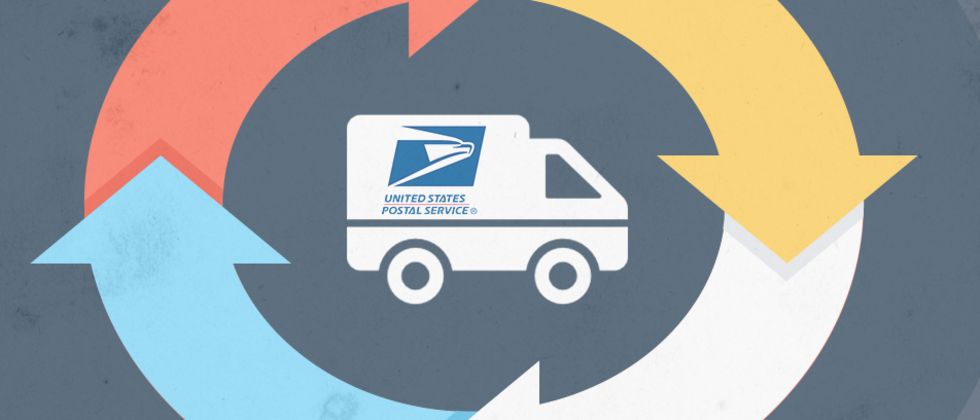California Management Review
California Management Review is a premier academic management journal published at UC Berkeley
by Mark Esposito

For the circular economy, the major challenge of reverse logistics — which involves asset tracking, dismantling, toxic waste handling, and the recovery of residual value from unwanted products like old mobile phones, packaging waste, and inkjet cartridges — is finding a way to increase the role of the consumer, who is a prime source of reusable materials. If our goal is to be a reduce-recycle-reuse society, consumers themselves must be much more proactive about closing the loop. Today, although municipal waste management can handle glass, cardboard, office paper and common plastics, they don’t deal with the recovery of small electronics, appliances, and clothing. But national postal networks like the US Postal Service, where 465 million pieces of mail are processed every day, can provide one possible solution to this challenge.
The USPS has regular access to consumers in a way that other organizations do not. Its mail carriers have a relationship with every home, because they stop to deliver mail daily. At the same time, the consumer determines the end-life of a product, and has been a missing piece of the circular economy for a long time. The disconnect occurs when convenience is chosen over environmental conservation. Consumers will often throw away unwanted products or leave them in a drawer, because it is easier than taking them to a designated recycling facility or drop-off point. So it is no surprise that drop-off points have not been successful in substantially improving collection rates. When it comes to the reuse principle in the circular economy, time is of the essence: the resale value and popularity of items like smartphones is cut in half within the first two years of a new phone entering the market. And when demand in secondary markets falls, the phone’s obsolescence is complete. At that point, only resource recovery is left as an option in the circular economy. However, reuse value is a critical aspect of the circular economy since it costs significantly less to keep a product in circulation than it does to downgrade it to the materials recovery phase of the product cycle, which can include steps such as manual dismantling and energy-intensive smelting. A daily pickup option from the USPS would help mitigate this loss of reuse value.
Transportation is already part of the equation when it comes to materials recovery. Global collaboration is necessary for end processing of complex small electronics such as circuit boards and smartphones, because of the high cost of capital required to build recycling infrastructure. But keeping the carbon footprint of materials recovery at a sustainable level is the only way that materials recovery makes sense. The more steps the USPS can do in a local setting, the lower the carbon footprint, with the added benefit of having the USPS return small-to-medium-sized goods back to markets. The postal service can conceivably handle some manual disassembly in addition to collecting unwanted products. Local USPS hubs can house inventory and create a structure for skilled laborers to work on manual separation of components. Having the USPS take over some disassembly tasks would make it possible to sort and gather similar materials close to the site of collection, thus cutting down on transportation costs by also functioning as the sorting facility. As an example, the USPS could collect an old PC unit and remove the motherboard, RAM, and other parts. Then, after sorting, all of the parts would be sent onward to the next step in materials reclamation.
There will undoubtedly be challenges. The costs of collection, disassembly, transportation, recycling and remanufacturing, inventory storage, and disposal—and how the revenues and profits from recycling, remanufacturing, and refurbishing will be split—would need to be thoroughly considered. Responsibility for protecting personal data from a refurbished electronic would also have to be taken into account. Despite these obstacles, reverse logistic models utilizing the postal service would be advantageous since its infrastructure already exists.
It’s no secret that the USPS has struggled financially, but the organization has also quietly shown itself to be flexible. Within the last few years, the USPS has partnered with United Parcel Service (UPS) and Federal Express to deliver mail on Sundays and make the final local delivery. The USPS has an incredible delivery system that is ultimately underutilized. By tapping into the USPS’s existing network, we will build a closed loop economy much more quickly.